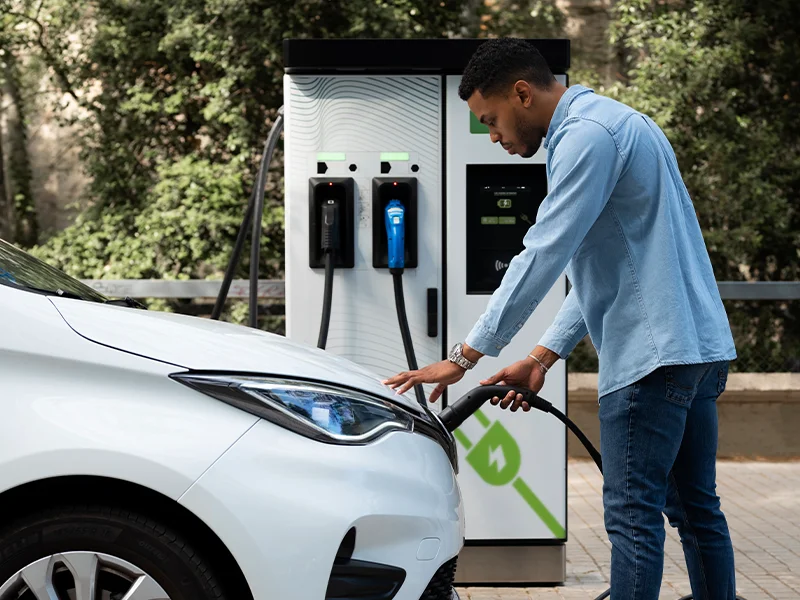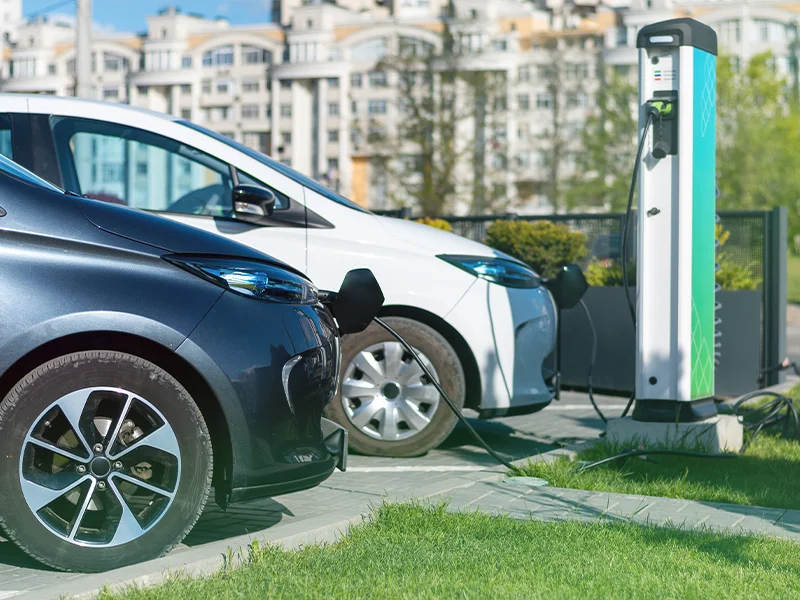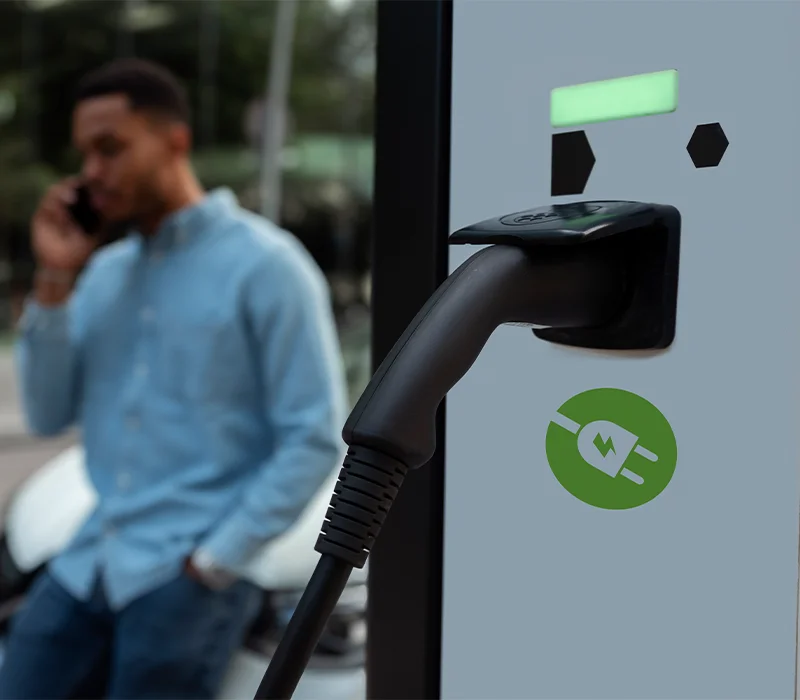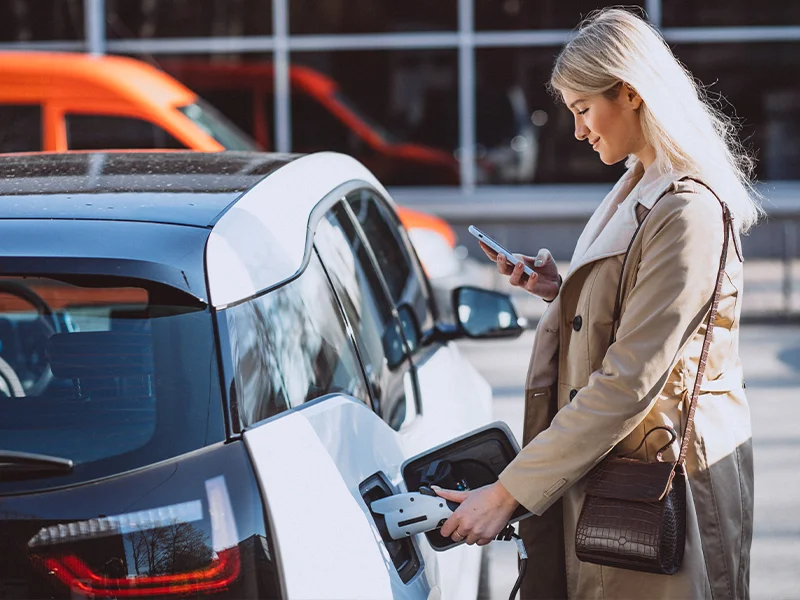The battery is the most important part of your electric vehicle. Not only does it keep your car moving, but it also makes up the majority of the cost of your vehicle. Luckily, EV batteries don’t call for as many repairs or replacements as traditional engines, but preserving the battery life of your EV is still critical to maximize the amount of charge your car is able to hold.
The performance of your EV depends on its battery health, and also keeps costs down as you’ll be able to charge and repair it less often. One common assumption about EVs is that they’re far more expensive and hard to maintain than other cars, but this isn’t often the case, provided you properly take car of your EV and its battery. This blog will walk you through the measures you can take to ensure your battery life stays optimized for longer, so you don’t have to worry about your car’s lifespan.
Understanding Your EV Battery
The battery in you EV is a lithium ion battery, the same as what’s in your phone or even used in your TV remotes. However, the battery driving your EV has quite a bit more power behind it. Typically, an EV battery can last for about 65,000 miles, but different models have warranties for up to 100,000. It will likely still be under warranty as your battery capacity naturally decreases over time, but that can be exacerbated if you’re making common mistakes that are causing your battery to be excessively run down or overworked.
There are newer EVs being manufactured with protections against overcharging, over-discharging, and overheating, but there are not the only problems that can affect your battery life. Temperature conditions, for example, can have a great impact on your battery, as extreme heat or cold can damage the chemical makeup of your lithium ion battery. However, there are simple precautions you can take to counteract many of the factors affecting your battery life.
EV Daily Driving Habits
Your personal driving style can have a significant impact on the battery life of an EV, just as it can for other vehicles. Aggressive driving is the primary way many people wear down their batteries, but it’s not the only one. Here are some tips on adjusting your driving style to maximize your battery life:
- Aggressive Driving: Rapid acceleration and frequent hard braking can put a lot of strain on the battery. When you accelerate rapidly, the electric motor draws a large amount of power from the battery, and when you brake hard, energy is wasted as heat through regenerative braking or friction brakes.
- Driving at High Speeds: Driving at high speeds, especially on highways, demands more power from the battery to overcome air resistance, which can deplete the battery faster and call for more frequent charging.
- Excessive Use of Climate Control: Heating and cooling systems in an EV rely on electricity from the battery. Using these systems excessively can drain the battery quickly, especially in extreme weather conditions. Try to use climate control only when necessary to avoid putting unnecessary stress on the battery.
- Weight Overloading: Carrying excessive weight or cargo can lead to increased energy consumption. The battery has to work harder to move the extra weight, reducing its efficiency and longevity. It’s advisable to only carry what is necessary.
- Driving in Hilly Terrain: Driving in hilly or mountainous areas can put more stress on the battery due to the increased energy required to climb steep inclines. Drivers in such areas should be mindful of their driving style and plan routes to minimize excessive elevation changes.
To maximize the battery life of an electric vehicle, it’s essential to adopt a more conservative driving style, use regenerative braking effectively, plan routes to optimize efficiency, and follow the manufacturer’s guidelines for maintenance and charging.
Electric Vehicle Charging Best Practices
Charging your battery incorrectly is arguably the easiest way to accidentally damage it. As EVs must be frequently charged, it’s important to maintain smart charging practices to avoid damaging your battery’s life every time you plug it in.
- Consistent EV Battery Over-Discharging: Lithium-ion batteries used in most EVs prefer to operate within a specific state of charge (SoC) range, typically between 20% and 80%. Consistently discharging the battery to very low levels (below 20%) or always keeping it at high levels of charge (above 80%) can accelerate degradation. It’s better to plug in your EV right as it reaches 21% or so.
- Frequent Fast EV Charging: While fast charging is convenient, using it too frequently can generate excessive heat and increase wear on the battery. Slow charging (Level 1 or Level 2) is generally gentler on the battery and is recommended for daily use. Reserve fast charging for when you need to top up quickly on a long journey.
Charge Anywhere can help optimize your charging routine by pointing you towards charging stations that fit your car’s make and model, also known as Intelligent Route Mapping. Charging stations for non-luxury EVs especially are not often publicized the way others are, but Charge Anywhere provide more options than any other platform. When you truly need a fast charging station, Charge Anywhere can take you there, and it can meet many of your other needs, too, like paying for your charging time right in-app.
Benefits of Intelligent Route Mapping with Charge Anywhere
Charge Anywhere’s AI-powered Intelligent Route Mapping needs only the information about your car and charging station needs you input in the app upon signing up. It then effortlessly pinpoints compatible charging stations along your route, tailored to your EV’s needs, and even filters options based on nearby amenities you love.
Not only does it find compatible charging stations, it also finds the most efficient routes to those stations and can guide you there with in-app directions. Taking a more direct route over smoother terrain saves battery life, just as it saves you time getting there. Efficient routing helps ensure that your battery percentage doesn’t drop below 20%, thus preserving a more favorable battery SoC.
Intelligent Route Mapping will make all your EV journeys more efficient by monitoring your battery percentage, tracking the terrain and incline of the roads you’re driving on, and calculating the distance you can keep driving until you need a charge along the way. Charge Anywhere takes all the questions out of the equation when it comes to preserving your battery, so you can simply focus on driving.
Seasonal Considerations for EV Batteries
Exreme temperatures, typically considered below 20 degrees Fahrenheit and above 95 degrees Fahrenheit, force your EV battery to work harder as it maintains a favorable temperature for both the cabin and the battery itself. Less energy can then be allotted to driving the vehicle.
When parking your EV, it’s always a good idea to keep it in a garage or shaded area. Garages keep the vehicle insulated and protected from any weather conditions, while shade blocks direct sunlight that will heat up the interior of your vehicle.
You can cool your EV down before charging to help your battery last longer. Before pulling in to a charging station, park in a shaded area and let the vehicle return to a normal temperature before then going to get it plugged in.
EV Battery Maintenance Tips
Maintaining an EV battery with regular maintenance, repairs, and software updates is crucial for extending its lifespan and ensuring it continues to perform efficiently. Here are some routine checks and maintenance practices to help you maximize the battery life of your EV:
- EV Tire Maintenance: Keep your tires properly inflated to the recommended pressure levels as indicated in the vehicle manual. Additionally, regularly check the tire tread depth and alignment to reduce rolling resistance and improve overall efficiency.
- EV Maintenance Mode: Some EVs have a maintenance or storage mode that allows you to set the battery to a specific SoC for prolonged parking periods. This can help protect the battery during long periods of inactivity.
- EV Software Updates: Keep your EV’s software up to date. Manufacturers may release software updates that optimize battery management and improve efficiency.
- Scheduled Maintenance: Follow the manufacturer’s recommended maintenance schedule. This includes checking and servicing components such as brakes, suspension, and cooling systems, as well as inspecting the battery system as specified by the manufacturer.
- EV Battery Health Reports: Some EVs provide battery health reports or diagnostics that you can access through the vehicle’s interface or app. Regularly check these reports for insights into your battery’s condition.
- Consult the Vehicle Owner’s Manual: Always refer to your EV’s owner’s manual for specific maintenance guidelines and recommendations from the manufacturer.
Don’t forget that it’s always essential to be aware of your EV’s warranty coverage on the battery and any specific guidelines provided by the manufacturer for maintaining battery health.
When to Use Eco Mode For EV Battery Life
Eco Mode is a driving mode or setting offered in certain EVs that is designed to maximize energy efficiency, reduce power consumption, and potentially extend the range of the vehicle. However, like any feature, Eco Mode has its benefits and drawbacks, which should be considered based on individual preferences and driving needs. Some of the benefits are:
- Improved EV Battery Energy Efficiency: Eco Mode typically adjusts various vehicle parameters to promote more energy-efficient driving.
- Extended Range: By using less power, Eco Mode can increase the driving range of an EV, particularly useful on long trips.
- Smoother Driving: Eco Mode often encourages a smoother and more gradual driving style, which can lead to a more comfortable and relaxed driving experience.
- Reduced Environmental Impact: Driving in Eco Mode reduces energy consumption, which means you’re using less electricity and reducing your carbon footprint.
- Lower Operating Costs: When you use less energy, you spend less money on electricity, which can make owning and operating an EV more cost-effective.
In contrast, one of the primary drawbacks of Eco Mode is reduced acceleration and overall performance. The vehicle may feel less responsive and slower when Eco Mode is engaged. Eco Mode may also not be suitable for all driving conditions. If you need to merge onto a highway quickly or pass other vehicles on a steep incline, the reduced power output in Eco Mode may be insufficient.
Eco Mode can be a valuable tool for maximizing energy efficiency and range in an EV, especially during daily commuting and city driving. The choice to use Eco Mode should depend on individual driving preferences, the specific driving conditions, and the need for energy conservation. For example, when driving in extreme heat or cold, you may decide against using Eco Mode, as it will not regulate the temperature in the cabin to preserve energy for driving, thus making it quite uncomfortable for those inside.
To maximize efficiency, use Eco Mode in your electric vehicle during daily commuting, city driving, and when you’re not in a hurry. It’s particularly effective in stop-and-go traffic, where the smoother acceleration and regenerative braking can help conserve energy. Eco Mode is also beneficial for longer trips where extending your driving range is a priority. However, in situations requiring quick acceleration, highway driving, or extreme weather conditions, consider switching to the standard or sport modes for better performance. Additionally, when you’re confident in your driving style and range is less of a concern, you can use Eco Mode to reduce energy consumption and minimize your environmental impact while enjoying a more relaxed driving experience.
Conclusion
The battery life of your EV should always be of the utmost importance to you as you’re driving, charging, and storing your vehicle. As it’s the primary driving force of your EV, preserving the battery life helps it last as many miles or years as possible with smooth driving and no trouble. It also keeps costs down, as you won’t have to charge or repair it as quickly or often.
For additional optimization of your battery life, EV drivers should download the Charge Anywhere app to simplify your driving and charging experience. Intelligent Route Mapping is just one part of how the app can revolutionize your charging routine. You can download Charge Anywhere in the Apple App Store or Google Play Store.




